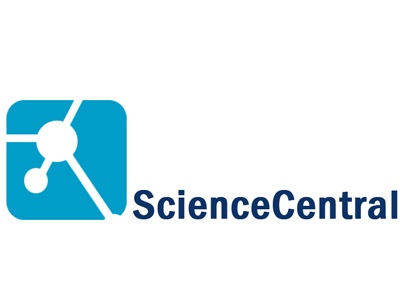
It is very difficult to deal with ethnic groups in research that aims to obtain information to underline decisions in ethnomarketing; but numerous articles have highlighted both problems and solutions that can be considered in the development of much more appropriate designs for future research. In this article we inventory some of them, based on relevant specialized papers. We believe that the submitted conceptual and methodological aspects provide important clarifications.
- Type: Review Article
- Published on: 10th January, 2020
- Keywords: Ethnic group; Ethnicity; Ethnomarketing; Ethnic identity; Research methodology;
- Pages: 7-15
- Received: 17th December, 2019
- Final revision and acceptance: 9th January, 2020

The global competitive work context, its dynamically changing environment, has accelerated the need for creative problem solving. Creativity and innovation are essential both for the success of companies and for the well-being of those who work in companies. We live in a world of technological and business turmoil where innovation can make the difference between survival and disaster. At the organizational level, innovation is essential, because it can ensure survival on the market, it offers new opportunities, in conditions of increased competition. Currently, the international economic context is characterized by change and the constant need for adaptation. Based on these considerations, we try to answer the question: how can innovation activities influence the competitiveness of SMEs in the current economic environment?
- Type: Case Study
- Published on: 23th January, 2020
- Keywords: Creativity; Innovation; Competitive advantage;
- Pages: 17-24
- Received: 20th December, 2019
- Final revision and acceptance: 21th January, 2020

Defining the concept of “audit quality” is an important undertaking, as it allows all stakeholders to determine whether the quality of an audit is improving over time or, conversely, is on the decline. Moreover, the unitary definition of this concept allows all stakeholders to refer to the same methodology for determining the audit quality and, consequently, allows different people interested in the quality level of an audit to use the same language when referring to such audit. An important conclusion that emerges from the analysis of the perspectives presented in this paper is that the audit quality level has two main components. That means that in order for an audit to be considered “of good quality”, two conditions need to be cumulatively met: the audit work must be performed in a manner that allows the identification of any malfunctions in the preparation of the client’s financial statements, on the one hand, and the audit firm needs to have the capacity to report any malfunctions that might be identified. Fulfillment of only one of the two conditions is therefore not sufficient for a quality audit; as a matter of consequence, it can be said that the two conditions are interdependent. Therefore, future research directions in the field of audit quality must focus on the parallel analysis of both quality conditions, given that narrowing the studies to the analysis of a single condition can provide information that does not truly reflect the quality of an audit approach.
- Type: Review Article
- Published on: 25th March, 2020
- Keywords: Audit; Quality; Measurement indicators;
- Pages: 25-30
- Received: 27th January, 2020
- Final revision and acceptance: 24th March, 2020

The conscious transformation of creativity into a commercial discipline has made it an explicitly desirable commodity. The concept of creative economy extends creativity to the economy as a whole, including socio-economic processes and work organization. The growing uncertainty facing organizations means that employees are increasingly facing new, ambiguous and complex problems that require creative solutions. The culture of creativity is established by the key decision makers in the organization, it is inherently related to the values of those people, to their actions, to the way they build the climate for creativity. Managing creativity in the workplace is the science behind creating a culture where innovation thrives. To encourage and manage creativity, managers need to understand creative processes, know how to select people with creative skills, be able to stimulate creative behavior, and provide an organizational climate for cultivating creativity.
- Type: Review Article
- Published on: 10th April, 2020
- Keywords: Creativity culture; Creativity climate; Innovation;
- Pages: 31-38
- Received: 31th January, 2020
- Final revision and acceptance: 9th April, 2020

The fundamental attribution error in explaining a person's behavior is a topic of major interest in the area of organizational behavior and human resource management. The objective of the research was to identify the frequency of organizational citizenship behavior (OCB) expressed by the employees of a private company, as well as to identify possible relationships between the type of attribution and the intensity of OCB. The results indicate the intensity of organizational citizenship behavior, but also the type of attribution made by the members of a work group, and do not differ significantly depending on the participants’ gender.
- Type: Case Study
- Published on: 25th April, 2020
- Keywords: Attribution; Fundamental attribution error; Organizational behavior;
- Pages: 39-44
- Received: 30th March, 2020
- Final revision and acceptance: 24th April, 2020

In this study, the aim was to identify the type of emotional work performed by employees from hotel industry (N = 148). The results indicated rather a type of emotional work characterized by "surface acting" of emotions that involves: a low intensity of self-perceived emotional exertion; a high-intensity emotional dissonance - because subjects perceive their emotional behavior (expression of emotion) as an inappropriate behavior, inauthentic for the situation itself; low level of emotional control and emotional participation (emotional control directed from the outside by organizational norms; low level of internalization and experiencing emotions during professional tasks; low level of internalization of the rules and organization’s regulations. The results also indicated that emotional work through surface acting does not vary significantly depending on the age and / or gender of the participants.
- Type: Case Study
- Published on: 11th November, 2020
- Keywords: Emotional work; Deep-acting; Surface acting; Organizational behavior;
- Pages: 53-61
- Received: 20th August, 2020
- Final revision and acceptance: 10th November, 2020

Ensuring a constant minimum income for all clergy is an old problem of the Romanian Orthodox Church. During the royalty, the financial motivation of the lay clergy in Romania was the main concern of the synods, which tried to find support in the Parliament, forming a law project in this regard - one of the initiators being Metropolitan Iosif Naniescu. The precarious financial situation and the dissatisfaction of the lay clergy led the synods to look for new solutions to solve this problem. The chosen solutions would satisfy and displease the lay clergy, the aspirants in theology and the non-clerical staff of the parishes. Among the chosen solutions were the reduction of the number of ordinations and the monopolization of the manufacture and sale of cult candles by creating a production and a distribution network, the resulting profit following to be used to support the salaries of clerical and non- clerical staff of the churches.
- Type: Case Study
- Published on: 11th November, 2020
- Keywords: Iosif Naniescu; Romanian Orthodox Church; Monopoly; Candle manufacturing;
- Pages: 63-69
- Received: 24th September, 2020
- Final revision and acceptance: 10th November, 2020










